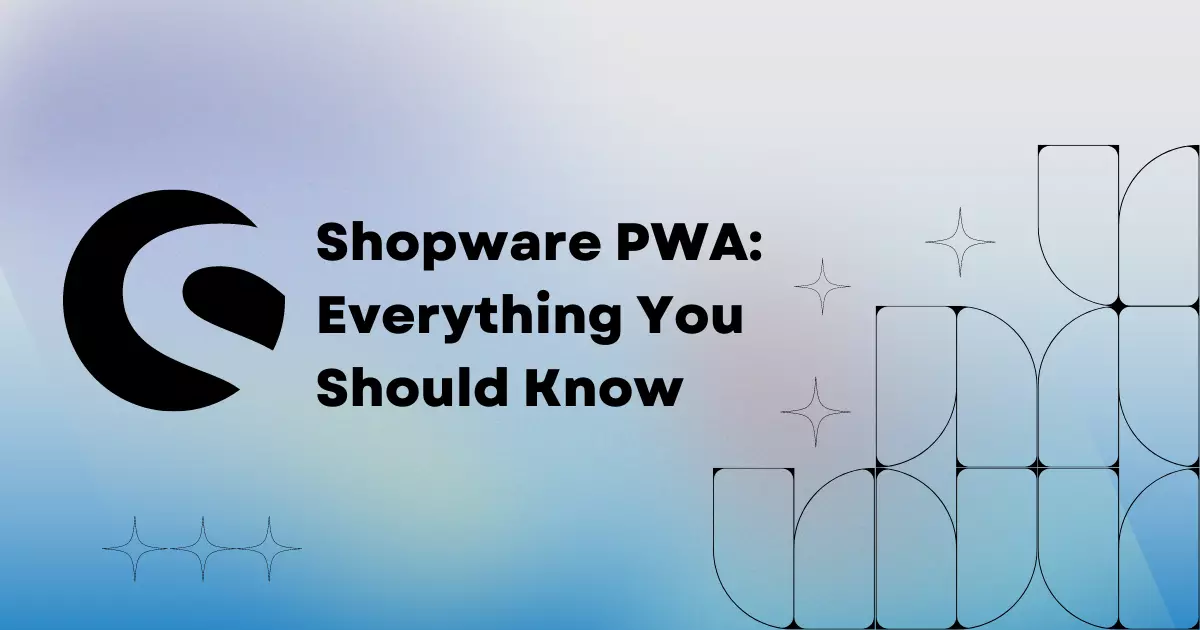
Progressive web apps (PWAs) have been gaining popularity as a way to provide a native-like mobile experience without the need for a separate app. They work like traditional apps but can be accessed through a web browser, eliminating the need for customers to download a separate app and allowing you to improve customer experience on all types of devices.
Shopware PWA is a solution that allows e-commerce businesses using Shopware to relatively quickly create a PWA for their store. In this article, we will explore the benefits of using a PWA for your e-commerce business and how Shopware PWA can help improve the mobile experience for your customers. Whether you’re a business owner looking to enhance your mobile presence or just curious about PWAs in general, this guide will provide you with all the information you need to understand the potential of PWAs for your business.
First, let’s look at what PWA is. A Progressive Web Application (PWA) is a type of web application that combines the best of both web and mobile apps. PWAs are designed to work seamlessly on mobile devices, providing users with an app-like experience without the need for installation. These web resources can be accessed directly from a mobile browser, and users can add a shortcut to the site on their home screen, making it look even more like an app.
One of the main benefits of PWAs is that the users can still interact with the app even when they don’t have internet access. This is a significant advantage, especially for users in areas with poor or unreliable internet connections. Your buyers will be able to continue browsing your store and using it to a certain extent, even in places without a cellular connection.
Many popular websites you know and use daily use this technology, such as Pinterest, Twitter, and Uber. These companies have implemented PWAs to provide mobile users with a more reliable, fast, and engaging experience.
The concept of PWAs was first introduced by Google in 2015. For years, Google has been working to improve the mobile users experience, starting with its mobile-first indexing approach. Google recognized that web resources should provide mobile users with reliable, fast, and engaging services, and PWAs were seen as a way to make that happen. With the rise in mobile usage and the increasing demand for app-like experiences on the web, PWAs have become a popular solution for businesses looking to improve the mobile user experience on their website.
Shopware first indicated they are planning on implementing a PWA in the ‘Shopware Playground’ in 2018 when they worked on a headless architecture. In mid-2020, they officially announced the launch of their PWA platform. It came in collaboration with the open-source Vue Storefront platform, with all of the usual Shopware features supported.
Let’s briefly talk about Vue Storefront. It is essentially an open-source, API-focused frontend for ecommerce that can be connected to any third-party services. It allows the developers to replace the frontend without touching the backend.
Here’s how it can help an ecommerce business:
Shopware also constantly improves its product. At the end of 2022, they published an article titled The Future Of Shopware PWA where they outline the potential growth of the platform in the upcoming years. It is an interesting read for those who want to know more about PWA and how it is implemented in Shopware, but in case you just want a TL;DR here it is:
For an improved experience, Shopware decided to restructure their PWA project and move it to a repository that (as of now) is called Shopware Frontends. It will combine the parts of the existing codebase with the overall polished documentation, types, and a new reference implementation. The goal is to address the common challenges faced by many store owners that use PWAs.
As we’ve mentioned, Shopware PWA was created with Vue Storefront.
The stack consists of:
The infrastructure of PWA-powered websites is extensive, allowing separate teams to work on different parts and technologies, providing greater flexibility, particularly for large businesses. Additionally, the Shopware PWA is designed with seamless plugin integration in mind, further enhancing its capabilities.
If you want to know more technical details, this video explains everything very well:
Flexible stand-alone frontend developed with a powerful UI library that allows you to be more creative with the design and functionality of your store.
Built with scalability in mind. Striving to make the experience better for larger companies, Shopware allows you to directly integrate with your WMS for order tracking or PIM system for products. The technology adapts to the requirements of the project – and not the other way around.
Quick integration. Marketing experts and ecommerce managers have their preferred tools for tasks like content management, personalized product pages, and tracking customer behavior. The Shopware PWA simplifies the process of integrating these tools and enhances the capabilities of Shopware 6 by working seamlessly with the existing features.
Fast performance. You can be sure that no customer will leave your store annoyed that it took too long to load. Shopware already works on being fast-loading, but PWA brings this to the next level on mobile devices.
No platform is without faults, and there are certain things you need to be aware of before going with the PWA route.
Here’s what to consider:
PWA is a wonderful solution for many reasons, and it will be well worth the investment for many store owners. If you are just starting your business, it would probably be unwise to immediately invest in developing a PWA unless you have a bigger budget to work with, as it can be a costly and lengthy process.
If you’ve decided to give PWA a try, let us help you! We have 8+ years of experience in ecommerce development, and we’ll be glad to use our experience to build you the best version of your new store.